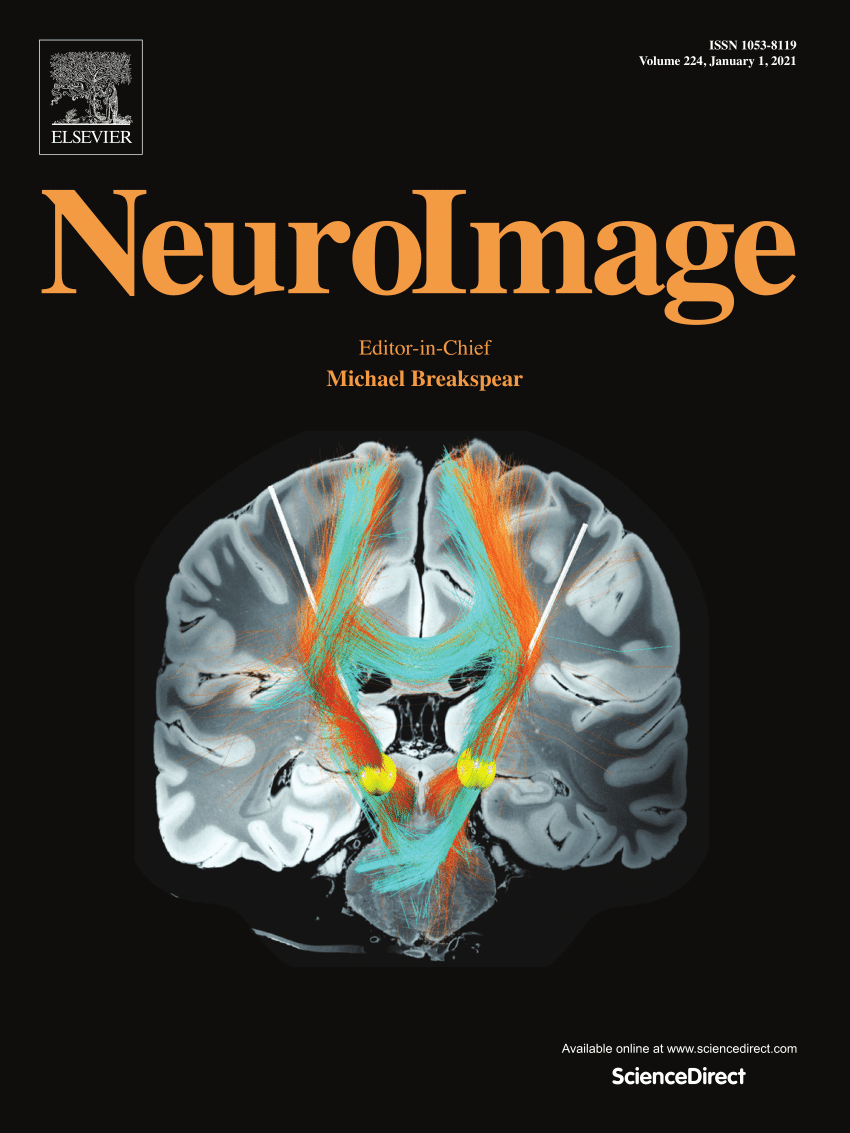Developmental patterns of white matter functional networks in neonates
IF 4.7
2区 医学
Q1 NEUROIMAGING
引用次数: 0
Abstract
In recent years, the development of neonatal brain networks has become a research focus, with traditional studies primarily emphasizing gray matter (GM) functional networks. This study systematically explores the developmental characteristics of white matter (WM) functional networks in neonates. Utilizing data from the third release of the Developing Human Connectome Project (dHCP), we analyzed resting-state functional magnetic resonance imaging (rs-fMRI) data from 730 full-term and 157 preterm neonates. We successfully identified ten large-scale WM functional networks and validated their correspondence with established WM fiber tracts using diffusion tensor imaging (DTI). We examined WM functional networks from two dimensions: network functional connectivity and spontaneous activity, incorporating four factors: preterm birth status, age, sex, and hemispheric differences. The results indicate that WM network functional connectivity significantly increases with age, with preterm infants exhibiting lower connectivity than full-term infants, whereas no significant differences were observed between sexes or hemispheres. Regarding spontaneous activity, preterm infants showed lower amplitude in the low-frequency range, whereas in the high-frequency range, their amplitude distribution was more unstable and dispersed. Additionally, certain differences in spontaneous activity were observed between hemispheres and sexes. These findings provide novel insights into the early development of neonatal brain networks and hold significant implications for clinical interventions and treatment strategies for preterm infants.
新生儿白质功能网络的发育模式。
近年来,新生儿脑网络的发展已成为研究热点,传统研究主要侧重于灰质(grey matter, GM)功能网络。本研究系统探讨了新生儿白质(WM)功能网络的发育特征。利用发育中的人类连接体项目(dHCP)第三版的数据,我们分析了730名足月新生儿和157名早产儿的静息状态功能磁共振成像(rs-fMRI)数据。我们成功地识别了10个大规模WM功能网络,并利用扩散张量成像(DTI)验证了它们与已建立的WM纤维束的对应关系。我们从两个维度检查WM功能网络:网络功能连通性和自发活动,包括四个因素:早产状况、年龄、性别和半球差异。结果表明,WM网络功能的连通性随着年龄的增长而显著增加,早产儿比足月婴儿表现出更低的连通性,而性别或半球之间没有显著差异。在自发性活动方面,早产儿在低频范围的幅度较低,而在高频范围,其幅度分布更为不稳定和分散。此外,自发活动的某些差异在半球和性别之间被观察到。这些发现为新生儿大脑网络的早期发育提供了新的见解,并对早产儿的临床干预和治疗策略具有重要意义。
本文章由计算机程序翻译,如有差异,请以英文原文为准。
求助全文
约1分钟内获得全文
求助全文
来源期刊

NeuroImage
医学-核医学
CiteScore
11.30
自引率
10.50%
发文量
809
审稿时长
63 days
期刊介绍:
NeuroImage, a Journal of Brain Function provides a vehicle for communicating important advances in acquiring, analyzing, and modelling neuroimaging data and in applying these techniques to the study of structure-function and brain-behavior relationships. Though the emphasis is on the macroscopic level of human brain organization, meso-and microscopic neuroimaging across all species will be considered if informative for understanding the aforementioned relationships.
 求助内容:
求助内容: 应助结果提醒方式:
应助结果提醒方式:


